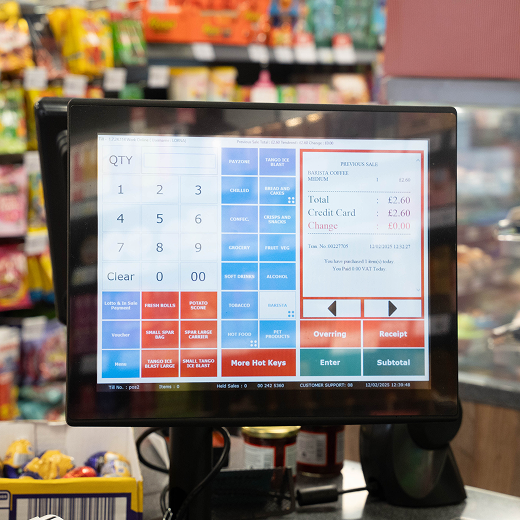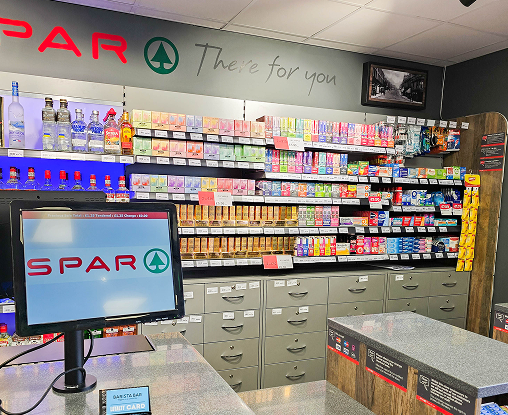In today’s fast-paced retail world, especially in the UK, convenience stores play a crucial role in neighbourhood shopping. Whether it’s a quick snack, emergency groceries, or a pint of milk on the way home, customers expect fast and reliable service. One essential piece of equipment that makes this possible is the Electronic Point-of-Sale (POS) scanner.
From handling barcoded tins of beans to reading QR codes from smartphones, modern EPOS scanners have evolved. They can do far more than just “beep” at the till. Choosing the right one can help reduce queues, cut human error, streamline inventory, and improve the customer experience.
But with a wide range of scanner types available, choosing the perfect EPOS scanner for your store can be overwhelming. This guide provides a detailed breakdown of EPOS scanners, tailored specifically for UK convenience store owners, to help you make an informed decision. It will walk you through the types of EPOS scanners, explain how they work, compare their pros and cons, and help you decide which one best suits your convenience store.
What Is an EPOS Scanner?
An EPOS scanner, also known as a barcode scanner, is a device that reads and decodes barcodes printed on products. It sends this information to the EPOS system, which then processes the product details, such as price, inventory count, and product description. This enables quicker checkouts, accurate pricing, and efficient stock control.
Barcodes can be printed on packaging or displayed digitally (like a mobile phone). Scanners ensure you’re not manually typing product names or prices, reducing errors and speeding up transactions.
EPOS scanners are available in various forms, sizes, and technologies, each tailored to meet specific business requirements. In essence, an EPOS scanner is the bridge between your physical inventory and your digital records.
Why Are EPOS Scanners Important for UK Convenience Stores?
The retail environment in the UK is competitive. For convenience stores, where margins can be thin and foot traffic can vary, speed and accuracy are everything. Here’s why investing in the right EPOS scanner is vital:
- Faster checkouts: Reduce long queues and keep customers happy.
- Accurate pricing: Minimise pricing errors at the till.
- Inventory updates: Automatically adjust stock levels with every scan.
- Loyalty & digital payments: Scan loyalty cards or QR codes from phones.
- Reduced training: Easy-to-use scanners make it easy to train new staff.
Types of EPOS Scanners: Features, Benefits, and Real-World Use Cases
Let’s dive into the most common types of EPOS scanners and their advantages and disadvantages.
1. Laser Barcode Scanners
Best for: Fast checkouts in traditional setups.
Laser scanners use a laser beam to read 1D barcodes (like those on most grocery items). They are a staple in many convenience stores due to their affordability and reliability.
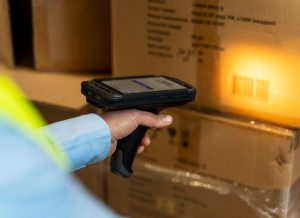
Types:
- Handheld laser scanners
- Fixed-mount laser scanners
Pros:
- Fast and accurate for standard barcodes
- Durable and cost-effective
- Scans from a relatively long distance
Cons:
- Cannot scan 2D codes like QR codes
- Less effective with damaged or smudged labels
Use case: Ideal for a Premier or Budgens branch with traditional barcoded products.

2. CCD (Charge-Coupled Device) Scanners
Best for: Budget-conscious stores with lower traffic.
CCD scanners use an array of light sensors to read barcodes. These are typically cheaper and have no moving parts, making them durable.
Pros:
- Inexpensive and low-maintenance
- Long-lasting due to lack of moving parts
- Quick at close-range scanning
Cons:
- Cannot scan from a distance
- Not suitable for 2D barcodes
- Struggles with glossy or reflective packaging
Use case: A small independent corner shop with minimal daily traffic.
3. 2D Imaging Scanners
Best for: Stores using digital systems or loyalty apps.
2D scanners use a digital camera to read both 1D and 2D barcodes. They can read barcodes from screens, making them perfect for digital wallets and mobile vouchers.
Pros:
- Supports all barcode types, including QR codes
- Can read from phone screens or receipts
- Reads damaged or poorly printed codes
Cons:
- Higher cost than laser or CCD
- May be unnecessary for stores with only basic scanning needs
Use case: A Londis branch that accepts Apple Pay, digital vouchers, and loyalty app scanning.
4. Omnidirectional Scanners
Best for: Busy shops with high-volume checkouts.
These scanners can read barcodes from any angle. That means your staff don’t have to manually align the barcode with the scanner – it just works.
Types:
- Desktop scanners
- Vertical slot scanners
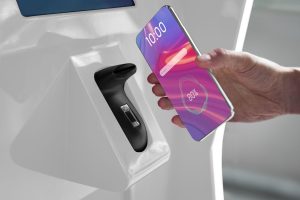
Pros:
- Ultra-fast scanning with no alignment needed
- Ideal for handling damaged or tilted barcodes
- Suitable for bulk scanning
Cons:
- Usually bulkier than handheld models
- More expensive than basic scanners
Use case: A high-traffic Nisa Local or Spar branch with constant checkout queues.
5. Mobile POS Scanners
Best for: Mobile checkouts, pop-ups, or space-limited counters.
mPOS scanners are wireless devices that connect via Bluetooth or integrate into tablets or smartphones. These are ideal for dynamic checkout environments and queue busting.
Pros:
- Portable and space-saving
- Seamless integration with modern EPOS apps
- Ideal for customer-facing mobile setups
Cons:
- Dependent on Wi-Fi or Bluetooth connectivity
- Battery needs regular charging
- May not be suitable for high-speed, high-volume scanning
Use case: Tesco Express using handheld mobile devices during peak hours.
How to Choose the Best EPOS Scanner: Key Factors to Consider
Before making a purchase, consider the following:
1. Barcode Types
If your store deals with QR codes, digital receipts, or e-vouchers, you’ll need a 2D scanner. If it’s just regular barcodes, a laser or CCD might be enough.
2. Counter Space
A cramped counter might benefit from a compact handheld scanner or a wireless mPOS solution.
3. Customer Volume
High-traffic stores need omnidirectional scanners for speed and efficiency.
4. EPOS System Integration
Ensure your scanner works with your current EPOS or till system. Compatibility is key.
5. Budget
Prices range from £40 for basic CCD models to over £600 for advanced omnidirectional systems. Set a realistic budget.
6. Future-Proofing
Think long-term. As customers move towards digital wallets and mobile coupons, your scanner should be ready.
Self-Checkout and Scanner Integration for Retail: Benefits and How It Works
In the UK retail sector, self-checkout systems are no longer reserved for big supermarkets or department stores. Increasingly, local convenience stores, forecourt shops, and high street retailers are embracing self-service technology to streamline operations and cater to a new generation of shoppers.
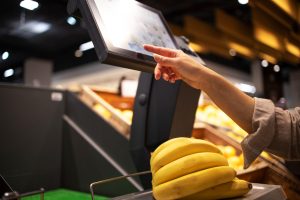
At the heart of this transformation lies the integration of barcode scanners with self-checkout kiosks, allowing customers to scan, bag, and pay for their items with minimal staff involvement.
In a self-checkout setup, barcode scanners play a central role in enabling smooth and accurate transactions. When a customer scans an item’s barcode:
- The scanner reads the code (1D or 2D).
- The item is instantly displayed on the kiosk’s touch screen with price and product info.
- The system automatically adds it to the virtual basket and updates stock levels (if integrated with an EPOS).
- Once all items are scanned, the customer proceeds to payment using the card terminal, mobile wallet, or contactless options.
These scanners are usually 2D imaging scanners, capable of reading both traditional barcodes and modern QR codes, whether printed or displayed on a smartphone. This is especially important for stores that accept digital loyalty cards, mobile coupons, or e-receipts. Some kiosks also include weighing scales for fresh produce or items sold by weight, offering a complete checkout experience.
The Rise of Self-Service Kiosks in UK Retail
The scanner is just one component, the real game-changer is the self-service kiosk that ties everything together. These compact systems typically include:
- Touchscreen Interface – For item confirmation and payment navigation.
- 2D Barcode Scanner – Fast scanning of items and digital vouchers.
- Integrated Card Terminal – For contactless, chip-and-pin, and mobile payments.
- Back-End Integration – With EPOS systems for live inventory and analytics.
What makes these kiosks especially attractive to convenience stores is their small footprint and plug-and-play nature. They can be installed in tight checkout areas, near store entrances, or even in aisle ends for quick grabs, making them ideal for stores with limited space but high transaction volumes.
Ready for the Next Step: Introducing MPOS Self-Service Kiosks
Now that we’ve covered the growing role of self-checkout and barcode scanner integration in modern retail, let’s explore how MPOS, a trusted UK-based EPOS solutions provider, is helping convenience store owners take full advantage of this retail evolution. MPOS is an advanced EPOS system developed by MHouse Business Solutions Ltd, based in Motherwell, Scotland. MPOS is a feature-packed Electronic Point of Sales system as well as an array of products and a software built for retailers, by retailers.
For convenience store owners looking to invest in a reliable barcode scanning solution, MPOS Self-Service Kiosks offer far more than just scanning, they deliver a complete, customer-driven checkout experience.
These kiosks are equipped with integrated 2D barcode scanners, allowing customers to scan items themselves, apply digital coupons or loyalty codes, and pay, all without staff assistance. Ideal for busy or small-format stores, this setup significantly reduces queues, lowers staffing needs, and enhances customer satisfaction.
Built for modern retail, MPOS kiosks combine:
- Touchscreen interface for easy navigation
- 2D scanner for printed and digital barcode reading
- Chip & PIN card terminal for secure, cashless payments
- Optional loyalty programme integration to reward repeat customers
- Real-time EPOS system syncing for stock updates and reporting
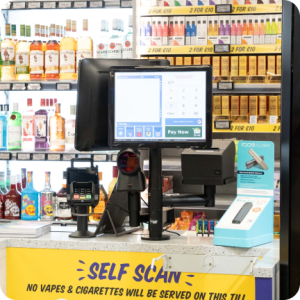
See How MPOS Works with Barcode Scanners for Smooth Checkout.
Why Choose MPOS Kiosks Over Traditional Scanners?
Instead of installing a standalone scanner, MPOS kiosks offer an all-in-one solution that also:
- Operates 24/7, ideal for late-night or unmanned hours
- Reduces staffing costs during low-traffic times
- Improves accuracy by removing manual entry errors
- Provides customer insights and sales data instantly
- Enhances store appearance with a sleek, modern design
With MPOS, scanning becomes just one part of a streamlined, secure, and efficient checkout process, perfect for UK convenience stores aiming to modernise without breaking the bank.
Recommended Scanner Setups by Store Type
| Store Type | Recommended Scanner Type |
| Small, independent shop | CCD or entry-level laser |
| Medium store with digital focus | 2D handheld or mobile POS |
| High-footfall with multiple tills | Omnidirectional desktop scanner |
| Queue busting or mobile checkout | Wireless mobile POS scanner |
| Self-service kiosk | Integrated 2D scanner + mPOS |
A WAY FORWARD
Choosing the right EPOS scanner is more than a technical decision, it’s about enhancing your store’s overall efficiency and customer satisfaction. Whether you’re running a small corner shop or a bustling high-street branch, the right scanning setup can save time, cut costs, and boost profits.
And if you’re thinking about going a step further, consider MPOS’s self-service kiosks, specially designed for UK convenience stores. These smart solutions combine modern design with practical functionality, giving your business a professional edge.
FAQs About EPOS Scanners
- Do I need a 2D scanner?
Yes, if you scan QR codes or accept mobile payments and e-coupons.
- Are wireless scanners reliable?
Yes, provided your shop has stable Wi-Fi or Bluetooth.
- How long do scanners last?
Usually 5–7 years depending on use and build quality.
- Can scanners be used for inventory too?
Absolutely. Many integrate with inventory management systems.
- Where can I buy scanners in the UK?
Try online retailers like Amazon, Barcode Warehouse, or MPOS partners.










